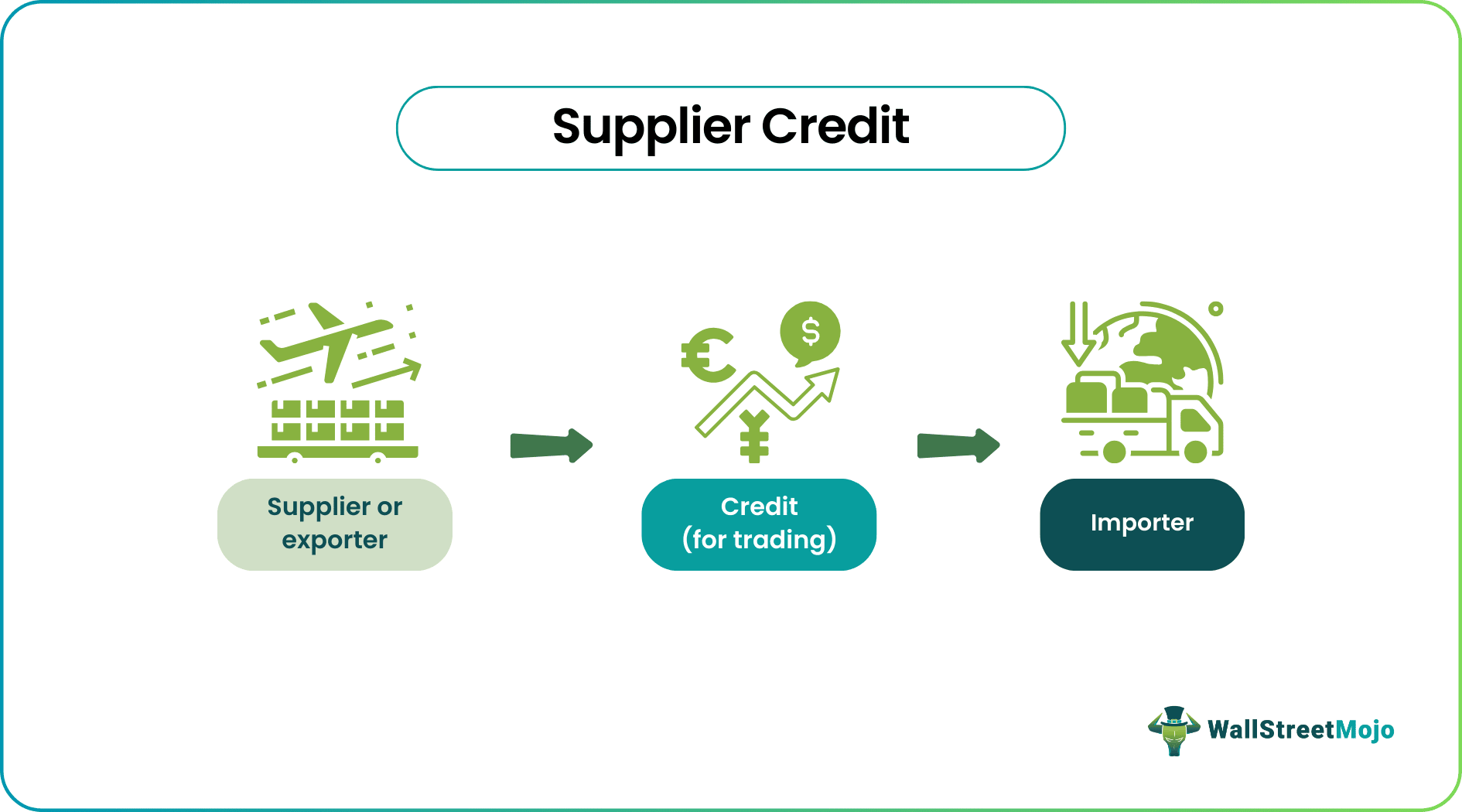Depending on who provides the money, the financing plans divide into supplier credits and buyer credits. These two methods make a sizable sum of funds available. However, they differ from each other in the following ways:
Table Of Contents
Supplier Credit vs Buyer Credit
| Key points | Supplier credit | Buyer credit |
|---|---|---|
| 1. Meaning | An exporter (seller, supplier) may grant an importer (buyer) credit as a condition of the export contract; this arrangement is called supplier credit. | In a buyer credit arrangement, an exporter and an importer enter into a contract financed by a loan agreement in which the importer of the products is the borrower. |
| 2. Parties to a Loan Agreement | A financial institution becomes a lender, and an exporter becomes a borrower because the exporter borrows money from the institution through the credit arrangement. Therefore, a loan arrangement includes an exporter and a financial organization. | When an importer takes out buyer credit from a financial institution, the importer and the financial institution become borrowers and lenders, respectively. A loan arrangement includes an importer and a financial organization as parties. |
| 3. Securities | A financial institution may require the exporter to hand over securities when they do not satisfy the required credit rating. It may therefore need the following: | Securities are needed when a financial institution finds that the importer's credit rating does not satisfy the requirements: |
Supplier Credit Meaning
Supplier credit is a commercial agreement that outlines the exporter's willingness to provide goods or services to a foreign buyer on credit. The exporter is commonly referred to as the supplier, hence the term "supplier credit". The technique allows exporters to provide goods or services on credit to foreign buyers/customers.

Supplier credit facilitates trade expansion as it enables the exporting country to promote exporting its capital goods and services. Another advantage is that such agreements help expand the exporter's financial channels. Additionally, the cost of financing for exporters through supplier credit, whether under insurance, guarantee, or direct financing, is generally lower than that of consumer loans.
Key Takeaways
- Supplier credit is an arrangement for credit extension between an exporter and a buyer.
- Payment on credit terms denotes the foreign buyer's agreement to pay a single sum at a later time or in several installments on a range of mutually agreed future dates.
- The financing plans are divided into supplier and buyer credits depending on who provides the money. In buyer credit, an importer (a buyer) is responsible for providing the financing.
How Does Supplier Credit Work?
"Supplier credit" is an arrangement for credit extension between an exporter and a buyer. The term "exporter" refers to a credit transaction supplier, a manufacturer of goods, a service provider, a dealer/trader, or an agent.
Payment on credit terms denotes the foreign buyer's agreement to pay a single sum at a later time or in several installments on a range of mutually agreed future dates. Furthermore, the export of goods and services from the exporter's country and their import into the foreign buyer's country is included in this commercial contract since the foreign buyer is from a different nation.
Steps
The following steps should be followed in general for a supplier credit:
- First, a deferred payment agreement is made between an exporter (a seller) and an importer (a buyer) under an export contract. Then, the importer pays the exporter.
- An exporter uses its credit to borrow money from a bank to fulfill the export contract. A loan agreement is made between a bank and an exporter.
- An exporter subsequently fulfills the terms of the export contract using the funds.
- After an exporter completes the export contract, the importer will pay the exporter using the profits from operating the plant on a deferred payment basis.
- Ultimately, an exporter will repay the bank using the money it receives from the importer.
Examples
Check out these examples to get a better idea:
Example #1
Company "A" and Company "B" are engaged in international trade. As a result, Company A exports its products and services to Company B. Company B negotiates to pay after delivering the goods and services, along with other terms and conditions. The exporter decides to use its credit to borrow from a financial institution to ensure the delivery process. Since the importing company is not paying for the goods and services beforehand, it buys on credit.
Example #2
Company XYZ is a company that wants to apply for supplier credit to finance its international trade. The agent institution, to grant the credit, requested certain details that included:
- Audited financial statements for the last three years,
- The company's ownership structure,
- And the company's projected cash flow analysis.
Besides the above, XYZ was required to provide documentation and guarantees for further assessments.
Advantages And Disadvantages
The main advantages and disadvantages of supplier credit are as follows:
#1 - Advantages
- A strong credit rating makes it easy for an exporter to secure financing through supplier credit since financial institutions are more likely to trust their financial stability.
- Offering supplier credit can give an exporter an advantage during contract negotiations, providing a competitive edge over importers who cannot offer financing.
- Supplier credit can facilitate business expansion and help companies profit from operations abroad.
#2 - Disadvantages
- An exporter is paid through a deferred payment approach, which can leave them vulnerable to payment rejection or non-payment by the importer, particularly in the event of bankruptcy or insolvency.
- Political and regulatory influences can impact foreign trade and may result in losses for exporters.
